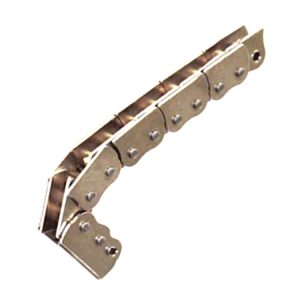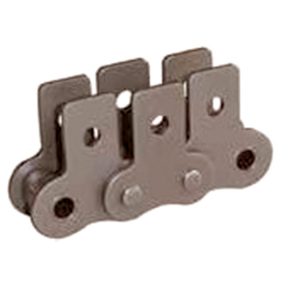Product Description
Factory Price High Precision Aluminum Timing Belt Pulley With Customized
We are HangZhou CHINAMFG Gear Machinery Co., LTD, and Newgear Planetary Transmission Co.,Ltd , My boss have 3 companies.
We are a large-scale manufacturer with 25 years of experience in manufacturing gears, synchronous wheels and reducers in HangZhou.
There are more than 500 employees.
HangZhou CHINAMFG Gear Machinery Co., Ltd. is HangZhou’s largest and leading gear transmission supplier in the Pearl River Delta. Famous-brand precision traditional enterprise in the industry. The main products include synchronous belt series. Precision gear grinding series. Three major areas such as planetary reducer series. Very Famous brand iHF, high precision. We can offer you pulley as your design.
Concentricity : 0.02-0.03mm
Main Features:
1. OEM/ODM tooth number from 10 to 72 timing pulley ,Or more teeth.
2. Material can be designed by customer requirement
3. High torque series S2M S3M S5M S8M P2M P3M P5M P8M
4. Normal torque series MXL XL L H
5. High precision drive series 2GT 3GT 5GT 8YU
6. Light load drive series T5 T10
7. Heave load drive series AT5 AT10
8. Clamping Timing Pulleys S3M S5M S8M
9.Good quality products
10.Competitive prices
11.Fast delivery
12.Best after-sale service
13.Brand: HeFa or OEM & ODM
14.Synchronous pulley shape:A /B/D/E/F/K
Basic Information:;
| Specification | Standard or Custom made |
| Material | Stainless steel,;,;brass,; carbon steel,; aluminum,; and so on.; |
| Surface Treatment | Zn-plating,; Ni-plating,; Cr-plating,; Tin-plating,; Copper-plating,; the wreath oxygen resin spraying,; black oxide coating,; painting,; powdering,; color zinc-plated,;blue black zinc-plated,; silver plating,;anodizing etc.; |
| Main Products | Precision spur gear,; Timing pulley,; Bevel pulley,; Worm& worm gear,; Timing Belt.;.; |
| Producing Equipment | CNC machine ,; automatic lathe machine,;stamping machine,;CNC milling machine,;rolling machine,; lasering,; tag grinding machine etc.; |
| Management System | ISO9001 – 2008 |
| Testing Equipment | Projecting apparatus,; Salt Spray Test,; Durometer,; and Coating thickness tester ,; 2D projector |
| Lead time | 10-15 working days as usual,; 30days in busy season,; it will based on the detailed order quantity.; |
| Delivery of Samples | By DHL,; Fedex,; UPS,; TNT,; EMS |
| Main Markets | North America,; South America,; Eastern Europe ,; West Europe ,; North Europe,; South Europe,; Asia |
| How to order | You send us drawing or sample |
| We carry through project assessment | |
| We give you our design for your confirmation | |
| We make the sample and send it to you after you confirmed our design | |
| You confirm the sample then place an order and pay us 30% deposit | |
| We start producing | |
| When the goods is done,; you pay us the balance after you confirmed pictures or tracking numbers.; | |
| Trade is done,; thank you!! | |
| Applications | Toy,; Automotive,; instrument,; electrical equipment,; household appliances,; furniture,; mechanical equipment,;daily living equipment,; electronic sports equipment,; ,; sanitation machinery,; market/ hotel equipment supplies,; etc.; |
Shipping
Contact person: Sunny.
We offer pulley, gear, gearbox. and other product.
OEM, ODM.
/* January 22, 2571 19:08:37 */!function(){function s(e,r){var a,o={};try{e&&e.split(“,”).forEach(function(e,t){e&&(a=e.match(/(.*?):(.*)$/))&&1
| Certification: | CE, ISO |
|---|---|
| Pulley Sizes: | Type B |
| Manufacturing Process: | Machining |
| Material: | Aluminum |
| Surface Treatment: | Electroplating |
| Application: | Chemical Industry, Grain Transport, Mining Transport, Power Plant, Printing |
| Samples: |
US$ 1/Piece
1 Piece(Min.Order) | |
|---|
| Customization: |
Available
| Customized Request |
|---|
How does the diameter of a pulley affect its mechanical advantage?
The diameter of a pulley plays a significant role in determining its mechanical advantage. Mechanical advantage refers to the ratio of the output force or load to the input force or effort applied to the pulley system. Here’s how the diameter of a pulley affects its mechanical advantage:
1. Larger Diameter: When the diameter of a pulley increases, the mechanical advantage also increases. A larger diameter means that the circumference of the pulley is greater, allowing a longer length of rope or belt to be wrapped around it. As a result, a larger pulley requires less effort force to lift a given load. This is because the load is distributed over a greater length of rope or belt, reducing the force required to overcome the load.
2. Smaller Diameter: Conversely, when the diameter of a pulley decreases, the mechanical advantage decreases. A smaller diameter means that the circumference of the pulley is reduced, resulting in a shorter length of rope or belt wrapped around it. As a result, a smaller pulley requires more effort force to lift a given load. This is because the load is concentrated over a shorter length of rope or belt, requiring a greater force to overcome the load.
It’s important to note that while a larger diameter pulley offers a greater mechanical advantage in terms of reducing the effort force required, it also results in a slower speed of the load being lifted. This is because the longer length of rope or belt requires more input distance to achieve a given output distance. On the other hand, a smaller diameter pulley offers a lower mechanical advantage but allows for a faster speed of the load being lifted.
The mechanical advantage of a pulley system can be calculated using the formula:
Mechanical Advantage = Load / Effort
Where “Load” refers to the weight or force being lifted and “Effort” refers to the force applied to the pulley system. By adjusting the diameter of the pulley, the mechanical advantage can be optimized to suit the specific requirements of the application, balancing the effort force and speed of the load being lifted.
Can pulleys be employed in agricultural machinery and equipment?
Yes, pulleys can be employed in agricultural machinery and equipment to facilitate various tasks and improve efficiency. They are versatile components that provide mechanical advantage, enable power transmission, and aid in the movement and control of agricultural implements. Here’s how pulleys can be used in agricultural applications:
1. Belt Drives: Pulleys are commonly used in belt-driven systems in agricultural machinery. They are used in conjunction with belts to transmit power from the engine or motor to different components, such as pumps, fans, and cutting mechanisms. By adjusting the size and arrangement of the pulleys, farmers can control the speed and torque of the driven equipment, optimizing its performance for specific tasks.
2. Harvesting Equipment: Pulleys are utilized in various types of harvesting equipment, such as combines, forage harvesters, and balers. They are employed in the cutting and threshing mechanisms to transfer power and drive the rotating components. Pulleys enable the synchronization of different parts, ensuring efficient crop harvesting and processing.
3. Irrigation Systems: Pulleys play a role in agricultural irrigation systems, particularly in the operation of water pumps. They are incorporated into the pump drive systems and help transfer power from engines or motors to the pump impellers. By using pulleys, farmers can adjust the pump speed and flow rate to meet the irrigation requirements of different crops and soil conditions.
4. Hay and Forage Equipment: In hay and forage equipment, pulleys are utilized to drive various components, such as cutting blades, conditioning rolls, and feed mechanisms. They enable the transfer of power from the tractor or engine to these components, facilitating efficient cutting, processing, and feeding of hay and forage materials.
5. Conveyor Systems: Pulleys are employed in conveyor systems used in agriculture for material handling tasks. They help drive the belts or chains that transport crops, grains, or other agricultural products. Pulleys ensure smooth and controlled movement, enabling the efficient transfer of materials between different stages of processing, storage, or transport.
6. Livestock Equipment: Pulleys find applications in livestock equipment, such as feed mixers, milking machines, and ventilation systems. They are used to transfer power and facilitate the movement of various components involved in these systems. Pulleys contribute to the smooth operation and automation of livestock processes, enhancing productivity and animal welfare.
7. Equipment Adjustments: Pulleys are also employed in agricultural equipment to provide adjustability and flexibility. They enable the adjustment of cutting heights, belt tension, and machine settings, allowing farmers to adapt the equipment to different crops, field conditions, or operational requirements.
Overall, pulleys play a significant role in agricultural machinery and equipment, enhancing power transmission, enabling precise control, and improving the overall efficiency of agricultural operations. Their versatility and adaptability make them valuable components in various agricultural applications.
What are the different types of pulleys commonly used in industry?
Pulleys are widely used in various industries for different applications. Here are the different types of pulleys commonly used:
1. Fixed Pulleys: Fixed pulleys are attached to a stationary structure, such as a ceiling or wall. They change the direction of the force applied without providing any mechanical advantage. Fixed pulleys are often used in combination with other pulleys to create more complex systems.
2. Movable Pulleys: Movable pulleys are attached to the load being moved, and they move along with it. These pulleys provide mechanical advantage by reducing the effort required to lift the load. Movable pulleys are commonly used in systems such as block and tackle arrangements to lift heavy objects with less force.
3. Compound Pulleys: Compound pulleys consist of a combination of fixed and movable pulleys. They provide a greater mechanical advantage than a single pulley by distributing the load over multiple segments of the rope or belt. Compound pulley systems are often used in applications that require lifting extremely heavy loads.
4. Snatch Blocks: Snatch blocks are pulleys with a side plate that can be opened to insert or remove a rope or cable without threading it through the pulley. They are commonly used in rigging and towing applications to change the direction of force and create a mechanical advantage.
5. V-Belt Pulleys: V-belt pulleys have a V-shaped groove that matches the cross-section of V-belts. They are used in belt drive systems to transmit power between two shafts. V-belt pulleys are commonly found in applications such as industrial machinery, automotive engines, and HVAC systems.
6. Timing Pulleys: Timing pulleys have teeth that mesh with the teeth of a timing belt. They are used in synchronous drive systems to ensure accurate and synchronized power transmission. Timing pulleys are commonly used in applications such as robotics, printing presses, and CNC machines.
7. Rope Pulleys: Rope pulleys have a smooth surface designed to minimize friction and prevent wear on ropes. They are commonly used in applications where ropes are used for lifting or pulling, such as cranes, elevators, and material handling equipment.
8. Wire Rope Pulleys: Wire rope pulleys are specifically designed for use with wire ropes. They have grooves or pockets that accommodate the shape and size of wire ropes, ensuring secure grip and efficient force transmission. Wire rope pulleys are commonly used in applications such as cranes, winches, and hoists.
9. Idler Pulleys: Idler pulleys are used to guide and tension belts or ropes in a system. They do not transmit power but help maintain proper belt tension and alignment. Idler pulleys are commonly used in conveyor systems, automotive engines, and other belt-driven applications.
10. Sheave Pulleys: Sheave pulleys are large pulleys used in heavy-duty applications, such as crane systems and elevators. They are designed to handle high loads and provide smooth and reliable operation. Sheave pulleys often have multiple grooves to accommodate multiple ropes or belts.
These are some of the different types of pulleys commonly used in various industries. Each type has specific features and is selected based on the requirements of the application, such as load capacity, power transmission, and operational conditions.
editor by CX
2024-05-06















